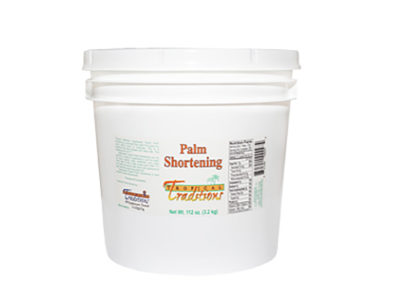Palm shortening is made from palm oil, an oil derived from the tropical palm tree (which is different from the coconut palm). Palm oil is actually the second most common cooking oil in the world, only bested by soybean oil (eww), and is a shelf-stable oil with a high smoke point. Palm shortening is palm oil with some of the unsaturated fats removed so that it is even more stable and has a thick, luxurious texture that is perfect for baking. The purpose of palm shortening is to replace traditional shortening, which is ridden with trans fats from industrial processing.
The standard practice for harvesting palm trees for palm oil destroys tropical forests and habitats of endangered species, so it’s definitely an important concern! I buy Tropical Traditions palm shortening, which comes from “small scale family farms in South America. These farmers are certified by ProForest, which ensures that they meet strict social, environmental and technical criteria. With regard to environmental criteria, the assessments are carried out at the landscape and operational level at both the farms and processing facilities. These assessments cover environmental impact on the soil, water, air, biodiversity and local communities. The lands the farmers use are not lands that were deforested. The lands used to grow the palm fruit are lands previously used for agricultural purposes (cattle, rice, banana).” [quote from TropicalTradidions.com]. Palm shortening is very useful in Paleo baking due to its unique chemistry. I typically use it in place of butter (because I can’t do any dairy) in baking or when the lack of flavor is important in a recipe. It can be used to make some very delicious smooth frostings and it’s also a great fat for deep frying.
Palm shortening has only been available in recent years, so there are only a few companies making it. Tropical Traditions is a company that I know and trust, so I always get my palm shortening from there.


 Wasabi Powder
Wasabi Powder